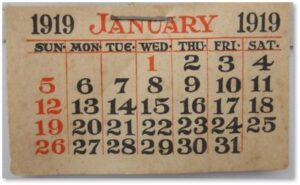 In researching Boston’s history, the year 1919 keeps coming up—and not in a good way. Important things happened in other years, of course, for better or worse. But either positive events also took place or the bad stuff affected much larger areas. 1919 concentrated a lot of problems in a relatively short time — making the year just plain different. Living in Boston in 1919 must have felt like constant turmoil.
In researching Boston’s history, the year 1919 keeps coming up—and not in a good way. Important things happened in other years, of course, for better or worse. But either positive events also took place or the bad stuff affected much larger areas. 1919 concentrated a lot of problems in a relatively short time — making the year just plain different. Living in Boston in 1919 must have felt like constant turmoil.
Boston’s terrible, awful, no-good, very bad year, hit the city with one big event after another. Each one of these deserves more than a few paragraphs and some have whole books written about them, movies created, and podcasts recorded. This post just shows the drumbeat of catastrophe and scandal that struck Boston in one 12-month period. The associated links take you to some of the more detailed information.
The events of 1919 follow in chronological order.
Winter: Spanish Influenza Epidemic
The Spanish Flu came into the United States through Boston’s Commonwealth Pier in what is now the Seaport District during the previous year. But the 1918 epidemic didn’t stop with the New Year as a new wave of influenza hit in the winter of the following year.
During the fall of 1918 and spring of 1919, more than 675,000 Americans died from the Spanish Influenza. The continuing epidemic kicked off a year of scandal and disaster.
January: Great Molasses Flood
On January 15, 1919, a molasses tank owned by the Purity Distilling Company exploded in Boston’s North End. The blast sent a wave of hot molasses roaring down Commercial Street at 35 miles an hour. The 2.3 million gallons of flowing molasses overwhelmed everything and everyone around where the tank had stood.
The Great Molasses Flood swept buildings, including a Coast Guard Station, off their foundations and collapsed others on top of workmen. It crushed part of an elevated railway. 22 people died immediately from drowning, suffocation, and being crushed to death. About 150 other victims suffered from long-term injuries. Houses and businesses were destroyed.
It took 500 men over a week, working with sand and seawater, to clean up the worst of the mess. Numerous law suits followed and were consolidated in the largest single class-action lawsuit in the United State to date.
Read: “Dark Tide: The Great Boston Molasses Flood of 1919”
by Stephen Puleo
Listen: “The Great Molasses Flood Remastered” on HubHistory Podcast
February: Boston Suffrage Protest
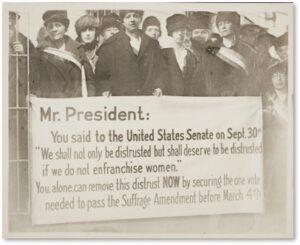 On February 24, 1919, Boston police arrested a group of women for protesting when President Wilson visited the Massachusetts State House and attended a parade in his honor. On his way home from the peace conference that ended World War I, President Wilson expected to be met by supporters and good will.
On February 24, 1919, Boston police arrested a group of women for protesting when President Wilson visited the Massachusetts State House and attended a parade in his honor. On his way home from the peace conference that ended World War I, President Wilson expected to be met by supporters and good will.
The 25 female protesters marched from their headquarters at No. 9 Park Street up the hill to the Massachusetts State House. They wanted to turn President Wilson’s attention to passage of the 19th Amendment. They needed him to pressure the U.S. Senate to secure the one vote needed to pass the amendment before Congress’s March third recess. Only one woman resisted arrest and most of the women were imprisoned in Boston’s Charles Street Jail. Sixteen of the protesters earned the title of the last women jailed for women’s suffrage.
Listen: “The Last Women Jailed for Suffrage” on HubHistory Podcast
Summer: Carlo Ponzi’s Scheme
In the summer of 1919, Italian immigrant Carol Ponzi founded the Securities Exchange Company to build a pyramid scheme based on the arbitrage of postal reply coupons. He duped thousands of investors by promising them a 50% return on their money in 90 days, which he later shortened to 45 days.
The scheme was a fraud from start to finish and everything about it was false. He based his plan on the premise that postal reply coupons for postage stamps bought cheaply in European countries after World War I could be redeemed for more money in the United States. Mr. Ponzi also told investors he had a staff of men buying the coupons around Europe.
In only a few months, he Mr. Ponzi bilked Boston residents—many of them Italian immigrants like himself—of from $15 to $20 million. Banks and trust companies crumbled when his fraud was revealed. Mr. Ponzi returned only $8 million before his trial on federal charges. He was convicted of mail fraud and sent to a federal penitentiary. But the term “Ponzi scheme” entered financial history.
- Read: “Charles Ponzi and the Ponzi Scheme: The History and Legacy of 20th Century America’s Most Famous Con Artist” by Charles River Editors
September: The Boston Police Strike
Boston Police went on strike on September 9, 1919, to protest unsanitary working conditions in the station houses, low salaries that had not kept up with post-WWI inflation, long shifts, and unpaid city “errands.” The city had long promised improvements but never delivered.
When the Boston Police unionized and affiliated with the American Federation of Labor (AFL), Boston Police Commissioner Edwin U. Curtis, believed that the police would take orders from the AFL. Thinking this would hamper discipline, he banned the officers from associating with any outside organization. They disobeyed. He suspended several union officials. And the police walked off the job.
City officials had done little to prepare for a strike. Chaos ensued as criminals took advantage of the unprotected streets. Massachusetts Governor Calvin Coolidge, who had ignored several opportunities to stop the strike, brought in the Massachusetts State Guard to keep order. Commissioner Curtis fired all of the officers who struck and none ever worked as Boston police officers again. Gov. Coolidge issued a tough-guy statement that took him all the way to the White House.
Read: “Roll Call: About the 1919 Boston Police Strike” website
Listen: “The 1919 Boston Police Strike” on HubHistory Podcast
October: Chicago “Black Sox” Scandal
Although associated with the city of Chicago, Major League Baseball’s Black Sox scandal actually started in Boston’s Hotel Buckminster. In this game-fixing scheme, eight members of the White Sox were accused of throwing the 1919 World Series against the Cincinnati Reds in exchange for money.
Feeling underpaid and unappreciated by Team Owner Charles Comiskey, several members of the Chicago White Sox decided to get what was owed them. Chicago White Sox first baseman Chick Gandil huddled with Boston gambler Joseph “Sport” Sullivan in the Buckminster Hotel in Kenmore square. Together, they hatched a plan to persuade some teammates to throw the upcoming World Series against the Cincinnati Reds.
Why Boston? The 1919 White Sox had wrapped up the American League pennant when they came to Boston to play the Red Sox on the weekend of September 19-20. On their way to an 88-52 first-place finish, the White Sox made prohibitive favorites in the Fall Classic. The Hotel Buckminster offered a convenient place to meet, right across the street from Fenway Park.
Mr. Sullivan, a known gambler in the Boston area, reportedly bet heavily on the 1903 World Series. Baseball Commissioner Kennesaw Mountain Landis banned the eight players involved from playing professional baseball and also from consideration for the Baseball Hall of Fame.
Watch: “Flashback: The1919: the Black Sox Scandal” on ESPN
Watch: “Eight Men Out”
December: Babe Ruth Traded to New York
To cap off Boston’s awful, no-good, very bad year, the Boston Red Sox lost their best pitcher and home-run king when Babe Ruth went south to the New York Yankees.
 You may believe the story that Red Sox Owner Harry Frazee sold Ruth—the best baseball player of his day—to finance the production of a Broadway musical called “No, No, Nanette.” Or you may prefer the more logical explanation that Mr. Frazee did it to avoid the Babe’s enormous contract demands, and even more outrageous behavior off the field. The sales served to help him hang on to the Red Sox.
You may believe the story that Red Sox Owner Harry Frazee sold Ruth—the best baseball player of his day—to finance the production of a Broadway musical called “No, No, Nanette.” Or you may prefer the more logical explanation that Mr. Frazee did it to avoid the Babe’s enormous contract demands, and even more outrageous behavior off the field. The sales served to help him hang on to the Red Sox.
Regardless, the trade represented a huge loss for Boston and the team. (I will not comment on the Curse of the Bambino, which I think is ludicrous. You can make up your own mind.) But the departure of the Babe served up an awful way to end what might have been the worst of years for the city of Boston.
Read: “War Fever: Boston, Baseball, and America in the Shadow of the Great War” by Randy Roberts and Johnny Smith
Watch: “Babe Ruth”
1919: Interesting Times
So, there you have it: explosion, disaster, crime, disease, politics and baseball all wrapped up in one tumultuous 12-month period. The Chinese proverb, “May you live in interesting times,” comes to mind. Although 1919 was a very interesting year, indeed, I am glad to encounter only in history.
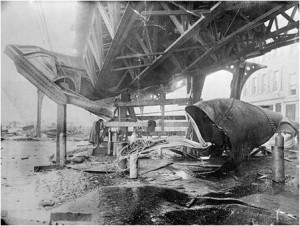
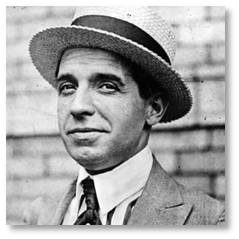
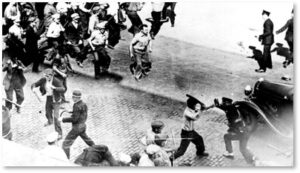
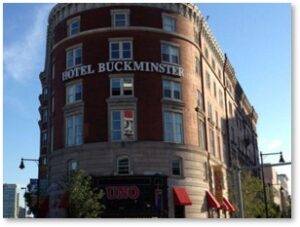

Dennis Lehane’s novel “The Given Day” also covers some of these events, especially the police strike.
Yes, it does. I wish I could say I enjoyed that book more but it’s so brutal that I could barely get through it.